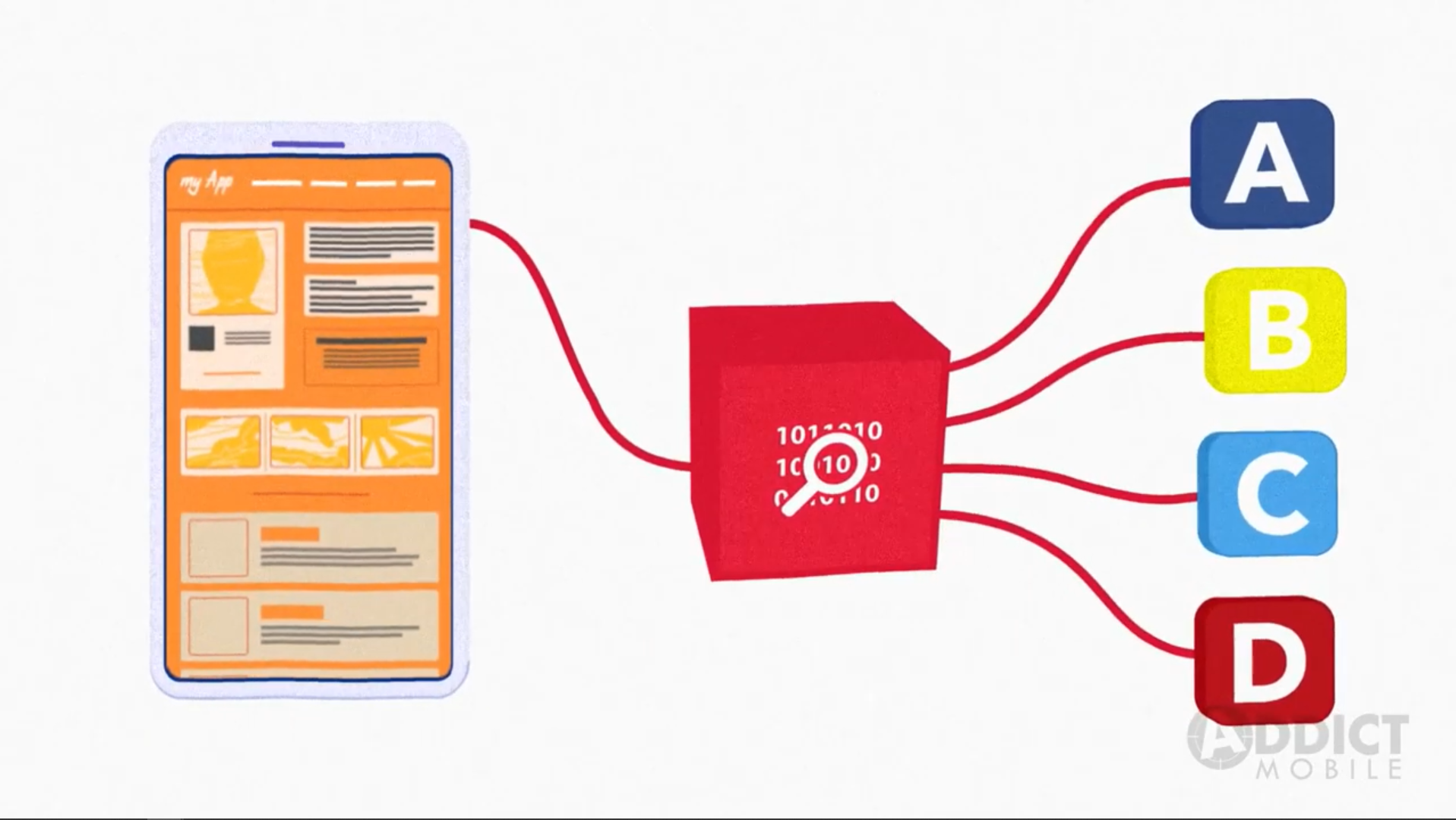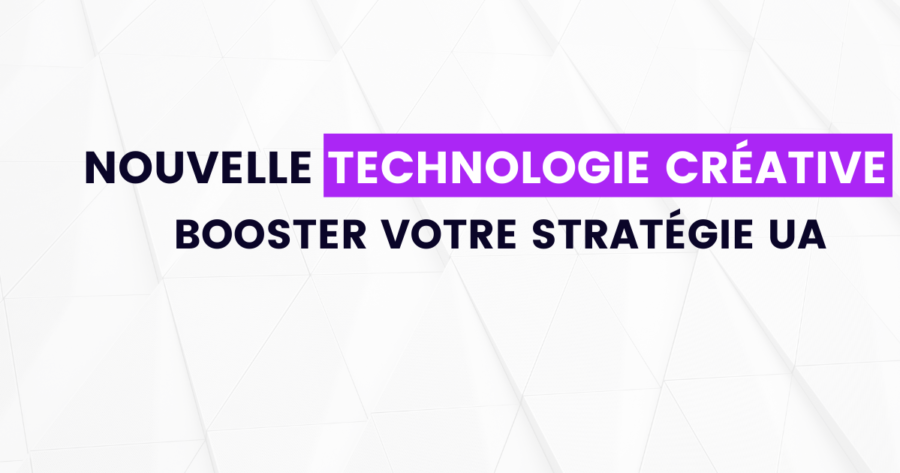The absolute basics of app tracking

In 2018, 94% of French people were equipped with a mobile phone; 3 out of 4 preferring the use of a smartphone. As well as the use of mobile applications, which have become part of users’ habits. According to App Annie, there were more than 194 billion downloads in 2018, a number that is expected to reach 258 billion by 2022.
Based on this observation, it has become crucial for an app publisher to understand from which channel users come. Hence, the tracking tools allow you to assign the installation to the source of the click or impression. This approach makes it then possible to know from which source, from which campaign or even from which design the users have come
There are two types of users:
organic users who naturally visit the application;
paid users who come from a marketing action: an affiliation, advertising campaigns, partnerships, etc.
In addition to tracking installations, these tools allow you to measure ALL conversions (installs, purchase, clicks, etc.) made within the app. To ensure an optimal analysis of your performance, it is important to «tag» the different events within your tracking tools to measure the achievement of your objectives (volume of registrations, generated revenue, retention, etc.)
These tools are therefore essential when you want to measure the profitability of your marketing actions. They link the action (download, visit, purchase) to the source – which will have broadcasted ads and enabled a new user to be acquired. This procedure allows you to optimize your campaigns according to the sources and parameters that give the best results.
However, tracking in the app environment differs from that of the Web. This article has been specially written to help you see things more clearly.
Why does app tracking differ from web tracking?
In Web tracking, the user always remains in the same environment: his Web browser (Chrome, Safari, Mozilla…). It is therefore easy to track the user throughout his journey. Thus, it is easy to determine the actions he will take by placing pixels at different places of the website.
In the application environment, once the user has seen or clicked on an ad, they are redirected to the store. Hence, the data becomes invisible to tracking tools because it is occurring in a different environment.
This change of environment has therefore led to the appearance of a different type of tracking within the applications. New actors, different from the Web, have therefore appeared: Adjust, Appsflyer, Branch, Kochava or Tenjin, to name but a few.
On mobile phones, an installation is only tracked via tracking tools when the user has opened the app – and not after the end of the download. When the app is opened, the tracking SDK, implemented in the app, is then triggered. It can then determine the install attribution by cross-checking the data recorded earlier in the click or view. Unlike Google and Apple. Indeed, the latter can upload the download directly from their stores and record a download – even if there has been no opening.
Here is a video to help you understand how app tracking works:
Attribution Models
Regarding mobile phones, we use «last click» attribution. This means that the last source that caused a click will be assigned the install. In the event that the user does not click on an ad, the installation can be assigned to the «view» (i.e. the source that generated the last impression before the download). It is important to keep in mind that the click prevails over the impression.
Attribution Windows
The attribution window is a defined period of time in which a publisher can claim that a click or impression led to an install.
Let’s take the example of an attribution window set to seven days after the click. If the user downloads and opens the application within seven days after the last click on an ad, the installation will be assigned to the source that generated the last click. If the download is made after this period, the download will be seen as an organic one.
The optimal or relevant duration of an attribution window can vary depending on the business areas. It is up to the advertiser to define it according to their business and media strategies.
Tracking tools have a default attribution window configuration when you create an account. Please note that these attribution windows can be modified directly in the tool interfaces. Of course, you must adapt them to your strategy.
The click prevails over the impression. Here is an example:
1) I see an ad on Facebook, click on it and get to the store page. But I don’t download the app.
2) Then I see this same ad on Google, but I still don’t click.
3) Finally, a few hours later, I go to the store and download this application.
=> I am assigned to Facebook because the click prevails over the impression (= the view).
Attribution Types
There are two types of attributions.
The classic attribution through the advertising ID
The advertising ID (or advertising identifier) is a unique number associated with your mobile operating system (Android or Apple). The SDK of the tracking tool that you will have previously installed within your application allows you to track this identifier. It is first recognized when you click or with the impression. It is then recognized when you download an app or do anything else within the application. It is therefore this identifier that allows tracking tools to match the download with clicks or impressions. This model is the most common when it comes to app attribution.
Fingerprinting attribution
This attribution is used when the advertising identifier is not available. This is the case when the ad is broadcasted on a mobile website for example (no application, therefore no SDK to track down the advertising identifier). This is also the case when the user has disabled the ad tracking on his phone. Tracking tools, therefore, use other publicly available parameters (IP address, phone model, geolocation, device name, OS etc.). However, this method is less precise, as over time the data become less and less reliable. The article entitled «Your attribution may be more wrong than right» explains this phenomenon very well:
As the time between click and conversion increases, fingerprint attribution becomes increasingly inaccurate. After three hours, accuracy drops by 85%. At the 24-hour mark, it drops to 50%; and beyond that, fingerprint attribution is more likely wrong than right.
For instance, if I click on an ad on a mobile website in Paris and download the application in Paris, but only open it in Poitiers after my train trip, I am considered lost by the tracking tool. Why? Because the IP address and location is different. Note, however, that fingerprinting represents a small percentage of mobile attribution.
Tracking tools, indispensable tools to drive tour campaigns and measure your profitability
Web and app environments, although similar in principle – because they use the same links and have the same conversion logic – differ greatly. If you want to conduct advertising campaigns to recruit new users into your application, it is recommended to implement a tracking tool. It will allow you to assign your conversions to each source from which they originate. You will then be able to fine-tune your mobile marketing campaigns.
Over the next few years, the challenge will be to reconcile both the web and the application environment. Indeed, a big question still arises: how to make sure that a user who sees an ad on his computer downloads the associated app on his phone? This is one of the priorities of tracking tools today. We look forward to sharing some good news with you soon!
ACTUALITÉS
Article en relation

Entender los datos de SKAdNetwork para mantener el…
Desde mayo de 2021 (iOS 14.5), Apple ha implementado el ATT, que limita la cantidad de datos recopilados para las campañas publicitarias. El...
Publié le 25 enero 2023
Soccer Star: Cómo adaptar tu estrategia worldwilde con…
Soccer Star es un juego de fútbol desarrollado por el estudio Redvel Games. Puedes crear tu propio jugador y vivir la experiencia de...
Publié le 10 febrero 2022
Una nueva tecnología que permite exportar vídeos en…
Con esta nueva tecnología, respondemos a uno de los principales retos de la adquisición de usuarios: la renovación continua de los visuales para...
Publié le 2 febrero 2022